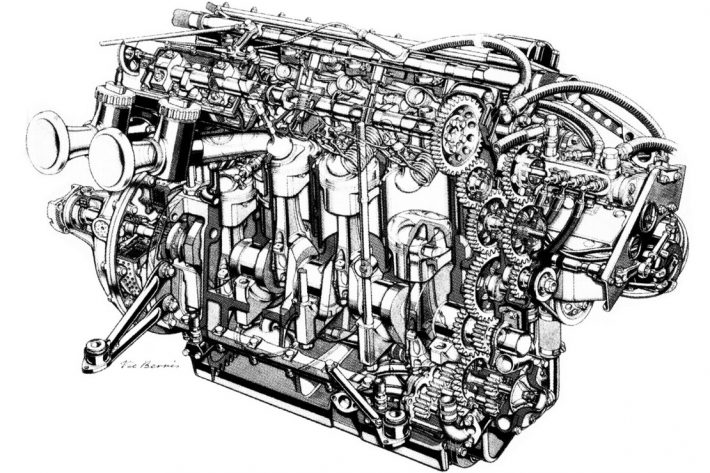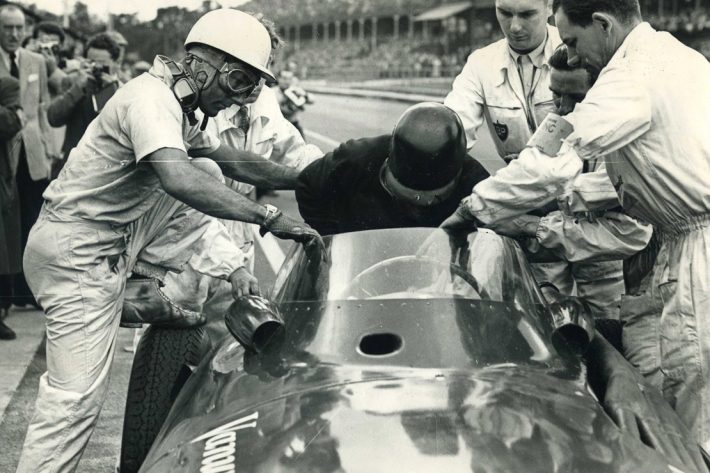Back in the 1950s single seat GP type racing cars had the engine in the front of the car and the fastest cars had exotic multi cylinder engines from manufacturers such as Mercedes (which had desmodromic valve operation), Maserati and Ferrari. British GP cars had to make do with mainly pre-war based engines of four or six cylinder and rely on very well balanced cars to make up the difference. Around this time there was a magic figure of 100bhp per litre for normally aspirated engines on ‘ordinary’ petrol. In other words, a 500cc engine producing 50bhp was considered very much state of the art.
Norton had discovered that one of their employees, Leo Kuzmicki (apparently sweeping the floors in the workshops!), was in fact a skilled engineer who knew more than a thing or two about racing engines. He, Joe Craig and others soon managed to get the magic 50bhp figure out of the Manx Norton engines. Work on squish bands, cylinder filling, and resonating exhaust systems all played a part in gaining such a high power output. These engines especially when allied with the Rex McCandless ‘Featherbed’ frame produced a light, narrow reliable racing machine which dominated 500cc and 350cc GP, TT and short circuit racing for many a year even in the face of multi cylinder challenges from Gilera and MV Agusta.
Making the connection
The connection with racing cars is this. Leo ended up working for Vanwall, a company set up by Tony Vandervell to build and race cars. He wanted a competitive British engine to put in his cars so Leo designed him an engine which was essentially four Manx Norton engines put together. Thus a 200bhp engine was directly available. In fact, the bore and stroke (86x86mm), cam profiles, head design and even four Amal GP carburettors were the same as the motorcycle engine but the engine was water cooled and mounted on, of all things, a Rolls Royce cylinder block.
As time went by the engine was stretched to nearly 2.5L which on methanol made around 300bhp and on petrol about 280bhp. The car was very successful with probably the most famous victory being in the British GP run at Aintree in 1957. Tony Brooks and Stirling Moss (yes car sharing was allowed in those days) pulled off a great victory in the Vanwall with the four Manx Norton engines in it. The days of front engine cars were numbered though when Cooper cars ended up with engines in the back of their cars (also involving Manx Nortons) and realised that it was a far more sensible way to design a racing car. In spite of Enzo Ferrari insisting that the ‘horse should always be in front of the cart’ very soon all GP cars were rear engined – and still are.


